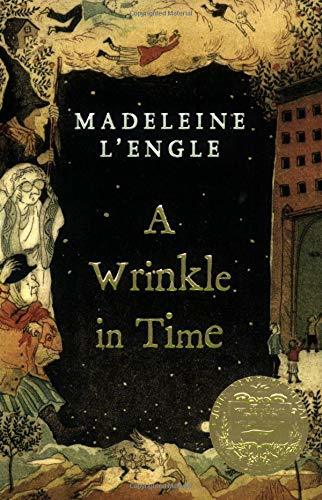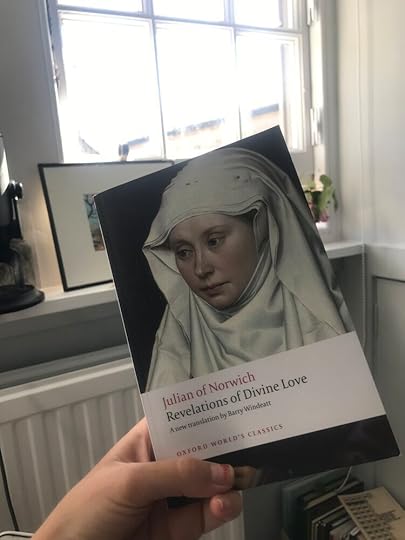Reading with Joy — Chapter One

The problem is that it’s not too difficult for kids, it’s too difficult for grown ups. Too many grown ups tend to put themselves into little rooms with windows that don’t open and doors that are locked and they want to close themselves off from any new ideas. But you’re ready and open for new ideas and new things and new excitements. So I hope you’ll enjoy this book. I had a wonderful time writing it.
— Madeleine L'Engle, preface to Wrinkle in Time
Dear friends,
It’s one of my favourite times of the year: the beginning of our summer book club! This summer we’ll be exploring the suspenseful, captivating, scientific young adult novel a Wrinkle in Time by Madeleine L'Engle. In previous years we’ve read The Great Divorce by C.S. Lewis and Orthodoxy by G.K. Chesteron, but as I pondered which book to choose for this summer, I wanted something less cerebral and more soul filling and story oriented.
It has been a heavy, weary few months, and as I investigated my literary cravings, I felt drawn to something that would throw open the windows of our imaginations, a story, something beautiful and hopeful and fresh, and I couldn’t get a Wrinkle in Time out of my brain. This was one of the first books I really loved as a young girl, which opened my mind to the grandeur of the universe and attuned my heart to the mystery that beats at the heart of it. It is not a hard book, but it is a deep book. I hope it will scoop you up, help you think and feel beautiful things, and breathe a fresh air of wonder into your heart.
This is how the book club will work:I’ll post an episode per chapter each week on Monday, which you can listen to in preparation for discussion. Then, I’ll post discussion questions on this website, my instagram, my twitter, and my Facebook. (full disclosure: I think discussion tends to go best on Instagram and Facebook). Post your thoughts, comments, questions on these threads as a way to engage the text. I also encourage you to discuss the book in real life (or over Facetime, given our weird times!) with a real friend… it’s so much more fun! In that spirit, each week I’ll have a different guest discussing each chapter with me.
On this week’s episode my mother, Sally Clarkson, joins me to discuss chapter one and give a short introduction to Madeleine L’Engle and the important themes in the book (link at the top of the page).Is this all making sense? If you have any questions, shoot me an email or ask your fellow book clubbers. :) I’m so excited to start this delightful journey with you all. There’s nothing better than talking about books with interesting people! I hope it will fill your soul, make you think, and bring you close with other readers.
Much love,
Joy
It was very special to record this episode with her as she was the one who first introduced me to the book. We share a love of it .
Each week I’ll post discussion questions. I’ll divide them into Story Questions dealing with the narrative itself, and Philosophical Questions exploring the themes the book brings up.
Story Questions: What makes Meg, Charles Wallace, and Mrs. Whatsit such oddballs? Are their differences an asset or a liability? Why does Mrs. Murray handle everyone’s oddities with such grace?Philosophical Questions: What do we risk by emphasising conformity in our cultural and educational systems?

A Wrinkle in Time (Time Quintet)
By Madeleine L'Engle
Three Themes to Notice in Wrinkle:Difference and Conformity
As we see in this very first chapter, the theme of difference and conformity runs through Wrinkle. Here are some questions to ask as you read: why does society have such an adverse reaction to difference? Is conformity necessarily a bad thing? Is difference necessarily a good thing? What role does fear play in conformity? How does love overcome fear and perfect difference?
Science and WonderThis book is properly science fiction, and many of the concepts L’Engle deals with (Tesseracts, for instance) are theories in physics. L’Engle spent a lot of time reading up on physics to write the book, and physics was a lifelong interest for her. Some scientists and Christians wondered if this was at odds with her religious faith, but L’Engle saw no conflict. For her, science threw open the windows of wonder, deepening and enlivening her faith. This is a central theme in the book. Here are some questions to keep in mind as you read: does science make the world seem less wonderful? Is science opposed to mystery and spirituality?
Love and BraveryIt is a truism that love conquers all, but this book is a true exploration of the extent to which this is true. The story suggests that the solution to difference is not tolerance, but love. That the bulwark against despair is not optimism, but love. As you read this book, keep these questions in your mind: what is love? Does love have the capacity to conquer despair? In what practical ways does love sustain the battle for goodness and hope?
DISCUSSION QUESTION:
P.S. Patreon book club…
We’ll be reading and discussion Julian of Norwich’s Revelations of Divine Love on my Patreon. It is the first book written in english by a woman, and describes her visions of Christ after a near death experience. It is a classic in the Christian mystical tradition, and has encouraged me very much. I'll do the podcast book club for the $10 tier (podcasts belonging in that tier originally). So if you want to join the book club, make sure you're in that tier by June 15th (but wait till after June 1st, if you want to avoid getting charged for May).
Joy Marie Clarkson's Blog
- Joy Marie Clarkson's profile
- 227 followers



